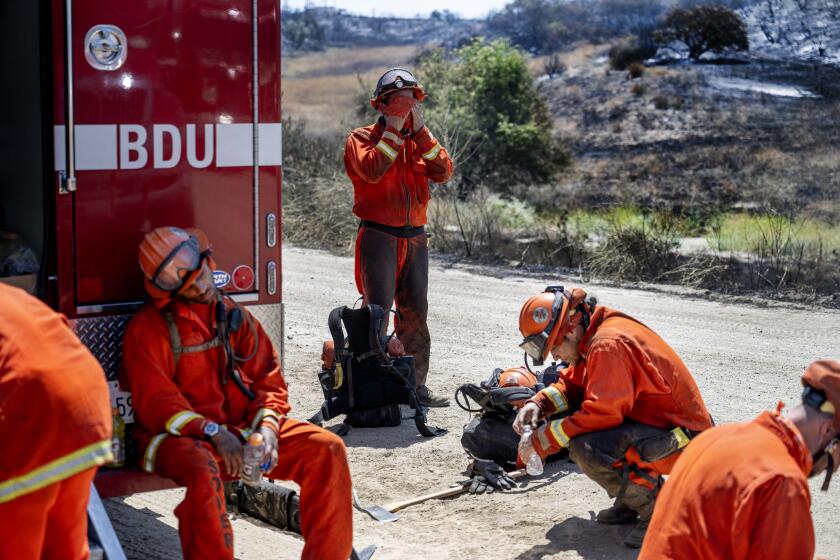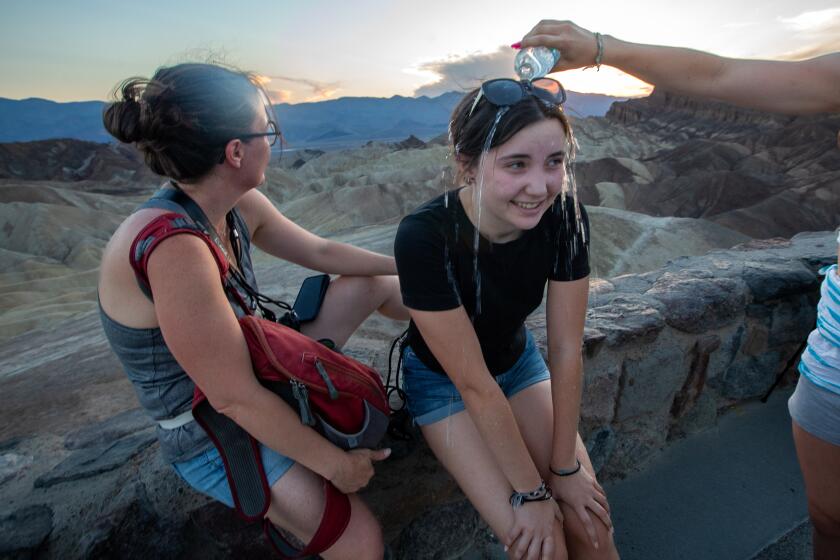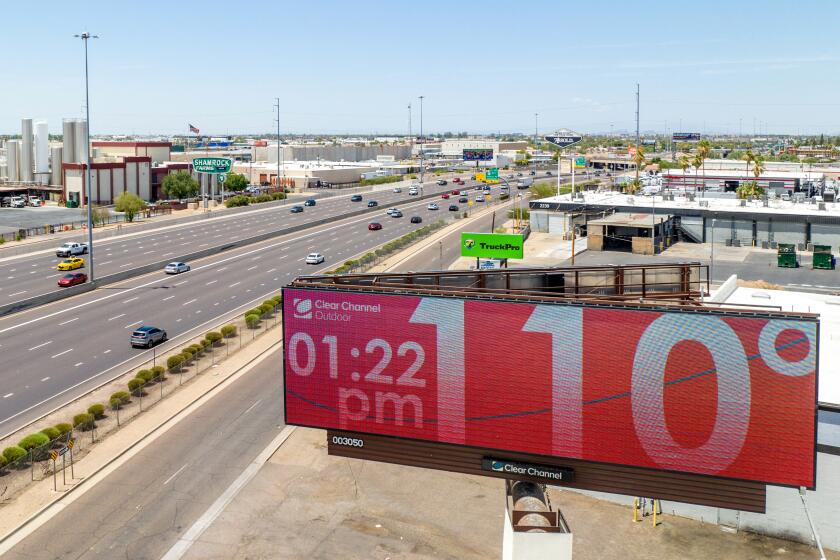Worse air quality in L.A. expected during heat wave. Why do high temperatures cause more smog?
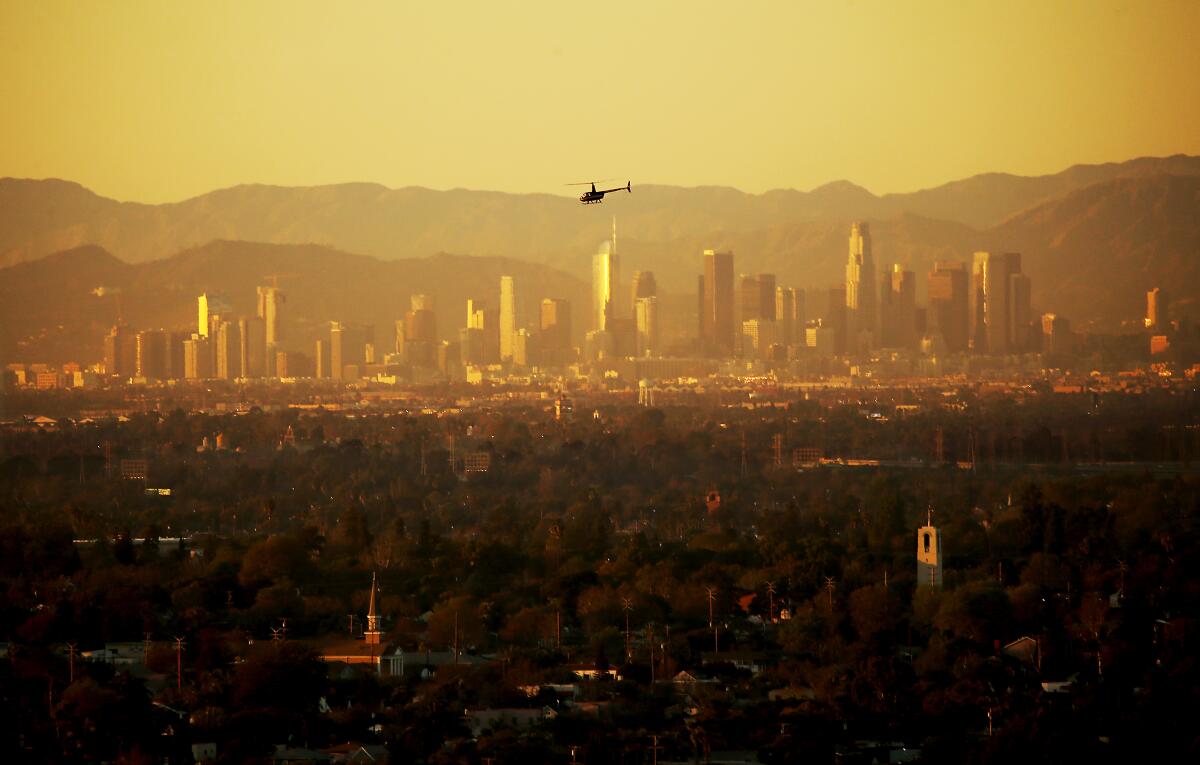
- Share via
The heat wave baking Southern California not only raises the risk of wildfires and heat-related illness but could bring another hardship: bad air quality.
The South Coast Air Quality Management District issued an air quality alert for inland areas of the South Coast Air Basin and the Coachella Valley because of elevated levels of ozone likely to cause poor air quality during the afternoon and early evening. The alert took effect Friday at 2 p.m. and continues until Tuesday at 8 p.m.
High temperatures often lead to more pollutants in the air — specifically ozone, the main pollutant during the summertime.
Southern Californians can expect another day of hot weather as a heat wave covers the region, bringing triple-digit temperatures and increased fire danger.
The AQMD has forecast good-to-moderate air quality for coastal regions and Orange County for Tuesday. Central and Southeast portions of Los Angeles County and Antelope Valley are projected to have moderate air quality, with ozone being the primary pollutant.
The air quality is expected to be unhealthy for sensitive groups in the San Gabriel Valley, Pomona, Walnut Valley, Santa Clarita Valley and the San Gabriel Mountains. That means pregnant women, children, older adults and people with heart or lung disease should avoid heavy outdoor exertion.
“It’s the high temperatures that increase the contents of ozone in the air, and we also have very weak winds, which allows the air to stagnate,” said National Weather Service meteorologist David Sweet. “All that ozone production occurs over the city and just sits there.”
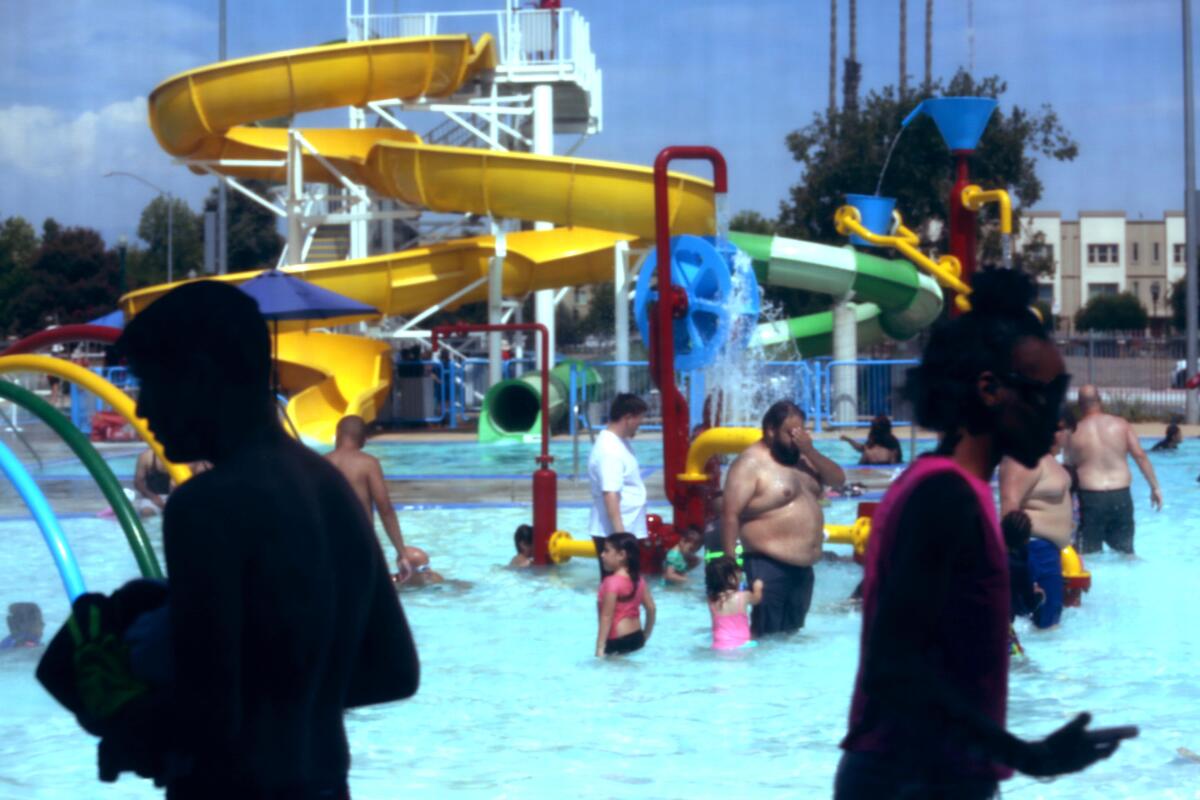
Ozone is created in the presence of heat and sunlight through the interaction of oxides of nitrogen, which come from combustion, and volatile organic compounds, which result from consumer products such as deodorant, hairsprays and gasoline.
“There’s a lot of reactions that make ozone in the atmosphere, and most of those reactions get faster as temperatures go up,” said Scott Epstein, air quality assessment program supervisor for the South Coast Air Quality Management District.
Ozone air pollution can lead to problems with respiratory health, including asthma attacks, trouble breathing and lung damage. Older adults, children and people with chronic obstructive pulmonary disease or asthma could be more sensitive.
Air quality can fluctuate depending on weather and time of day. To mitigate pollution levels, people should should try to limit the use of gasoline-powered garden and lawn equipment until the evening, set their thermostats to a higher temperature, conserve electricity and try to delay the use of household chemicals and trips to the gas station until the evening.
Because ozone is at its worst during the afternoon and early evening hours, Epstein said, people can shift their activities to the morning when the air is cleaner. When the air quality is poor, people should also try to stay inside with the windows and doors closed and try to avoid house fans that bring the outside air indoors.
The climate crisis has arrived in the American West. Let’s meet it head on.
Southern California has been grappling with triple-digit high temperatures over the last week as a “heat dome” has trapped heat near Earth’s surface and kept the region warm, along with the rest of the Southwest and much of the globe.
Phoenix set a record Tuesday with its 19th straight day of at least 110-degree heat, standing alone among major U.S. cities. Night has offered little relief, as the city has also set local records with its streak of nine straight days of temperatures that never dropped below 90 as well as an overnight low of 95 on Monday.
The high pressure system behind the heat dome over Arizona and the Southwest is also preventing the cooling rains of monsoon season from reaching the area.
In Southern California, Tuesday was forecast to be the coolest day of the week due to weaker high pressure and strong onshore winds, according to the weather service. Temperatures were expected to drop by 2 to 4 degrees in most areas, cooler than normal near coastal regions and hotter than normal inland.
“We’re cooling down just a little bit,” Sweet said. “It’s going to go back up this weekend, but we’re not sure it’s going to be quite as warm as last weekend.”
It’s expected to warm back up Friday into Saturday, bringing temperatures just below heat warning levels. Interior regions could end up seeing heat advisories and warnings if temperatures climb high enough. Saturday is expected to be the warmest day, with high temperatures forecast to be 8 to 12 degrees above normal in the warmest areas.

Overnight high temperature records were broken Monday night into Tuesday morning in Lancaster and Palmdale, where it reached 86 and 84 degrees, respectively. The previous records were 82 and 79 degrees.
Downtown Los Angeles is forecast to see temperatures in the upper 70s to the 80s through Wednesday before climbing back into the mid 80s and 90 by Friday.
Antelope Valley will likely be the warmest area in the region, with projected highs between 96 and 104 through Wednesday and 99 and 108 degrees over the weekend.
Phoenix smashed a record for major U.S. cities Tuesday, the 19th consecutive day that the temperature reached 110 degrees.
About 38.5 million Californians live in communities with unhealthy levels of fine particles or smog, according to the American Lung Assn.’s annual “State of the Air” report, which has served as a national scorecard for the two major air pollutants since 2000.
Southern California tends to experience its worst air quality over the summer and also during wildfire season, Epstein said. There is fine particle pollution during the winter, but it’s not nearly to the same level as during warmer months.
Changes in ozone levels are driven by meteorology and emissions over longer periods of time, according to Epstein. Because temperatures are warmer due to climate change, the question is whether it’s possible to reduce emissions fast enough to counteract the heat.
“Before this heat wave, we had one of our cleanest several months in decades,” Epstein said. “After the heat wave, things started to look a bit more like a normal year.”
More to Read
Sign up for Essential California
The most important California stories and recommendations in your inbox every morning.
You may occasionally receive promotional content from the Los Angeles Times.
